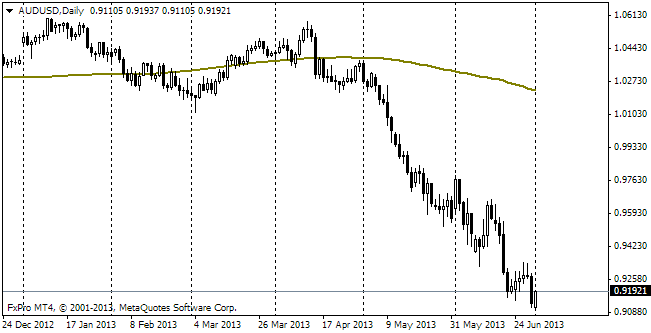EUR/usd
The portfolio rebalancing and demand for the EU currencies were interrupted yesterday by Kiev's accusations that Russia had active forces in Ukraine and helped the separatists. The UN believes that over 1000 of soldiers can be located on the territory of the neighbouring state. Such accusations imply further aggravation of the conflict. The stocks of the Russian corporations and the ruble lost about 2 % yesterday afternoon, affecting the EU indices and currencies. Thus, eurusd went on the defensive off the intraday high of 1.3220 and closed the day at 1.3180. Thursday's low makes 1.3158 and it is less than 10 pips above the low of the preceding day. The pair is again walking a tightrope, risking to hit fresh multi-year lows. The German employment and inflation statistics were also against the euro. The labour market of EU's locomotive unexpectedly lost 2 K, but there also was a downward revision of the preceding data, which created a gloomier picture than expected. Besides, we received inflation stats from different lands, which at the end of the day formed into the preliminary inflation statistics for August. They met the expectations (0.0% m/m and 0.8% y/y), but also spoke about absence of inflation pressure. Today we will get data for the entire eurozone. It is expected that the annual growth rate will once again slow down, form 0.4% to 0.3%. Poorer data will raise the markets' expectations regarding the ECB's incentives next week. In the meantime, the euro's overnight rate fell below 0, which speaks about plenty of liquidity in the region and arouses pressure on the single currency. Also we can't but mention strong data on the US GDP in the second quarter. The annualized growth is now estimated at 4.2%, while there prevailed expectations of slowdown from 4.0% to 3.9%. Despite this news background the euro looks quite good, so if the news pendulum swings in the opposite direction, we can expect a more impressive recovery of EURUSD.
GBP/USD
The cable tried to copy the market's movements, though generally it kept aloof balancing between decline because of the geopolitics and correction after a serious drop. Already more than a week the pair has been trading within the 1.6535-1.6600 range. Today Britain releases only secondary data like housing prices or quarterly investment performance. It is unlikely that they will affect the course of trading. Technically, if the market is able to break out of the channel, the movement can get much more intense.

USD/JPY
The Japanese inflation met the expectations. The annual performance is still significantly affected by April's tax increase, so it is not surprising that July's inflation made 3.4%. Meanwhile, the unemployment rate and household spending unpleasantly surprised. The unemployment grew from 3.7% to 3.8% (though no changes had been expected) and the household spending lost 5.9% against the same month a year ago, in comparison with 3.0% a month ago and expected growth to -2.7%. Industrial production grew by 0.2% in July, which is a percent below the expected rate. As a result, the annual losses totaled 0.9%. Japan doesn't hurry to recover, which will put further pressure on the yen.

AUD/USD
The geopolitical tensions and weakness of Germany's statistics didn't prevent the aussie from gaining appreciating against the dollar in the first half of the day. But further, when the strong US GDP rates joined the game, the AU dollar proved to be under pressure. Eventually audusd just hit 0.9373, but then had to take up the defensive position and is now trading below 0.9350.
